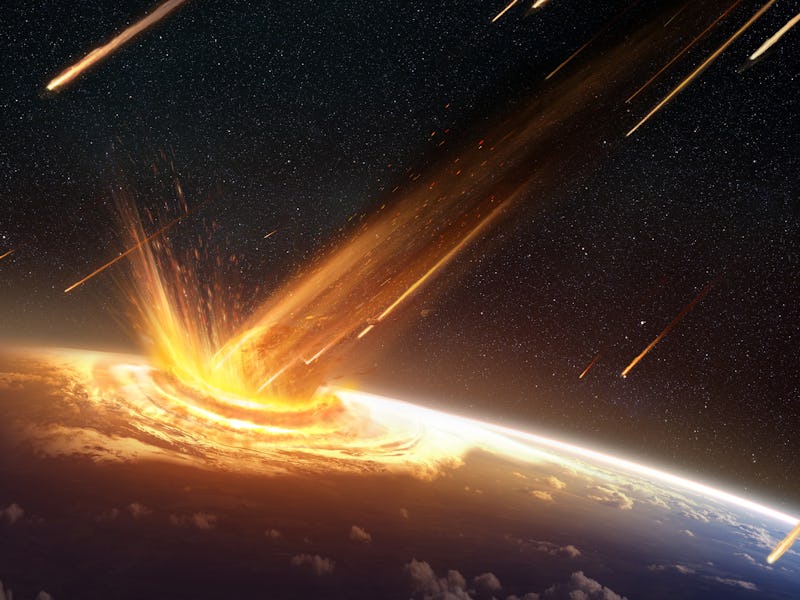A Meteorite the Size of Four Mount Everests Hit Earth — It Left This Strange Aftermath
Simple life found a way to survive.

Earth got gobsmacked with a space rock more than three billion years ago, when bacteria reigned supreme. This space rock was 50 to 200 times larger than the infamous one that killed the dinosaur eons later, and yet, it seems the hefty collision wound up giving early life a boost.
The finding, which is detailed in a study published Monday in the journal Proceedings of the National Academy of Sciences, attempts to shed light on a mysterious chapter in our planet’s history. When life was just getting going on Earth, our planet was still in the middle of colossal bombardments. Somehow, this didn’t entirely wipe out life. That’s despite events like the new study’s subject, a meteorite called S2, that triggered a massive tsunami and boiled the oceans.
Diagrams illustrating what happened before and after the S2 impact.
According to the paper, scientists estimate that giant impactors, which have diameters greater than 10 kilometers, “pummeled the Earth” at least every 15 million years at that time. Though now, of course, they don’t; it's been 66 million years since the Chicxulub meteor smashed into Earth and wiped out the non-avian dinosaurs.
So how did the S2 space rock seem to allow life to thrive? S2 definitely killed life forms, but the impact also released phosphorus. The tsunami stirred the ocean, and brought iron-rich deep water to the surface. In South Africa, the team found the sediments above the S2 impact layer showed evidence that iron-feasting microbes temporarily bloomed. “Giant impacts were not just agents of destruction, but also conferred transient benefits on early life,” according to a study announcement.
The effect the four-Mount-Everest-sized S2 rock had on bacteria on Earth can be likened to oral hygiene routines, Nadja Drabon, lead author of the paper and early-Earth geologist at Harvard University, tells Inverse via email. Brushing your teeth in the morning kills a lot of bacteria, but by the evening, many have grown back. "We think that while conditions were disastrous for a few years to decades after the impact, there would have been enough refugia available for life to persist, albeit at reduced abundances and efficiencies.”
It helped that early life was small and basic. “You have to remember that the microorganisms were a lot simpler, versatile, and had faster doubling rates than more complex life like dinosaurs. Once conditions returned to normal, microorganisms would bounce back rapidly,” Drabon said.
South Africa’s Barberton Greenstone Belt, where the team did their research, has much more to offer. The region contains evidence of at least seven other impact events. According to the study announcement, Drabon and her team plan to revisit the site to learn more about the seemingly-opposing, yet essential, relationship between the bloom of early life and the dramatic bombardments of rocks from outer space.